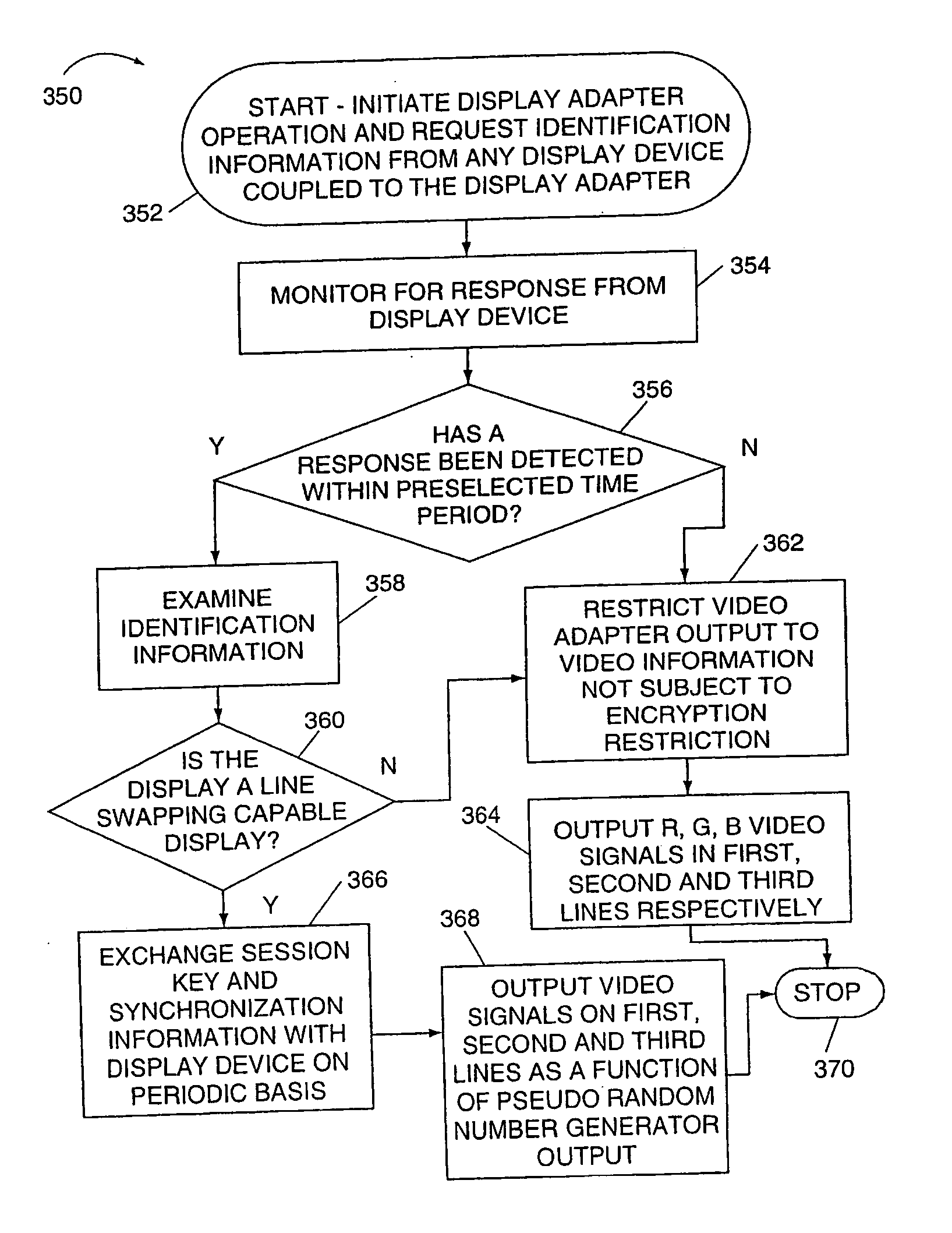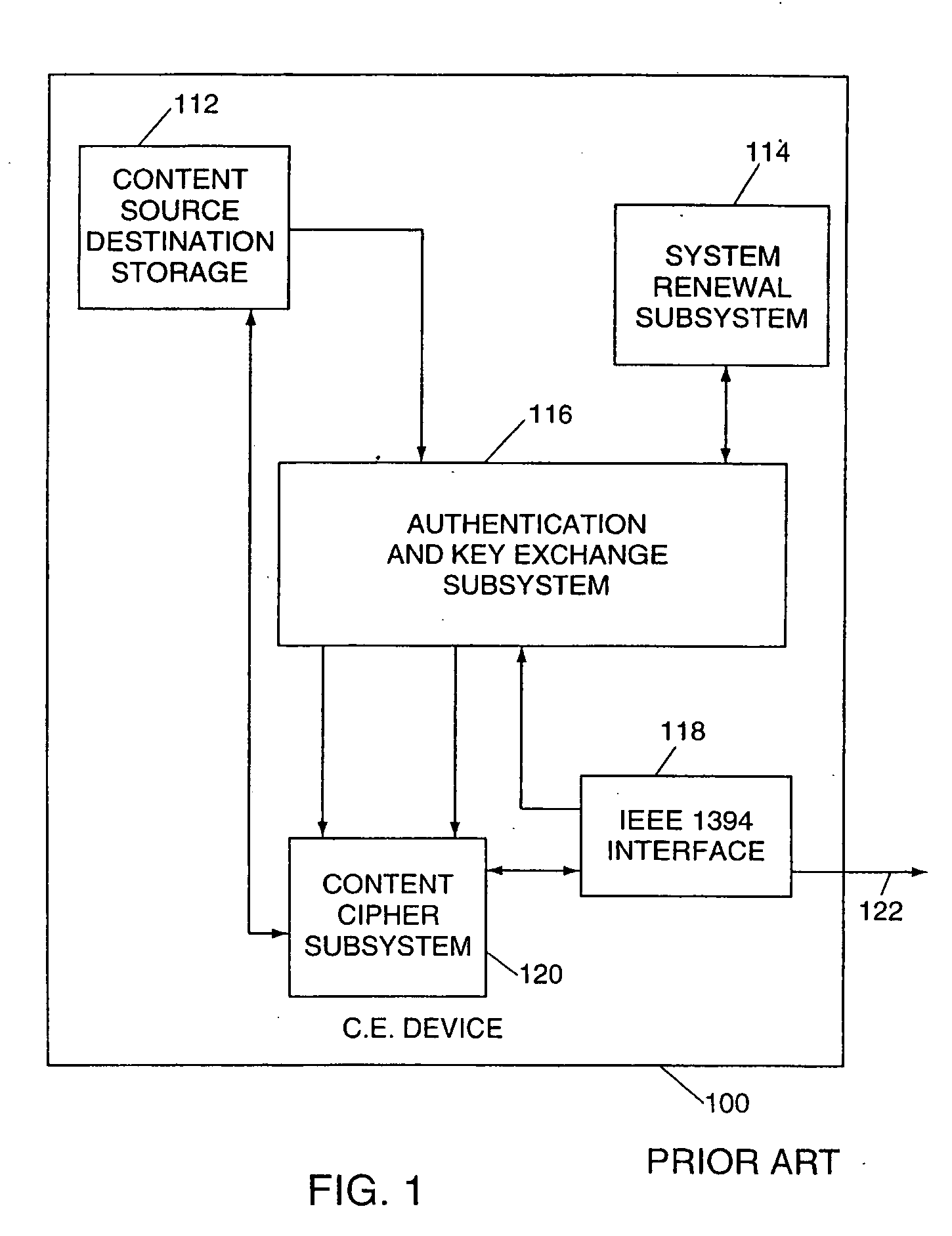Methods and apparatus for protecting signals transmitted between a source and destination device over multiple signal lines
a signal line and transmission method technology, applied in the field of methods and apparatus for transmitting and storing information, can solve the problems of theft of copyrighted information, commercial videos, and the cost of digital media and digital players, and achieve the effect of good protection
- Summary
- Abstract
- Description
- Claims
- Application Information
AI Technical Summary
Benefits of technology
Problems solved by technology
Method used
Image
Examples
Embodiment Construction
[0059] As discussed above, the present invention is directed to methods and apparatus for preventing the unauthorized copying or use of the content of transmitted and / or stored information, e.g., video and / or audio signals.
[0060] Those skilled in the art will recognize that the present invention may be effected by a wide range of devices, other than just a personal computer (PC), and particularly, specific circuitry therein. Program modules that incorporate our inventive teachings may include routines, programs, objects, components, data structures, etc. that perform a task(s) or implement particular abstract data types. Moreover, those skilled in the art will appreciate that at least some aspects of the present invention may be practiced with other configurations, including hand-held devices, multi-processor systems, microprocessor-based or programmable consumer electronics, network computers, minicomputers, set-top boxes, mainframe computers, displays used in, e.g., consumer elec...
PUM
 Login to View More
Login to View More Abstract
Description
Claims
Application Information
 Login to View More
Login to View More - R&D
- Intellectual Property
- Life Sciences
- Materials
- Tech Scout
- Unparalleled Data Quality
- Higher Quality Content
- 60% Fewer Hallucinations
Browse by: Latest US Patents, China's latest patents, Technical Efficacy Thesaurus, Application Domain, Technology Topic, Popular Technical Reports.
© 2025 PatSnap. All rights reserved.Legal|Privacy policy|Modern Slavery Act Transparency Statement|Sitemap|About US| Contact US: help@patsnap.com



